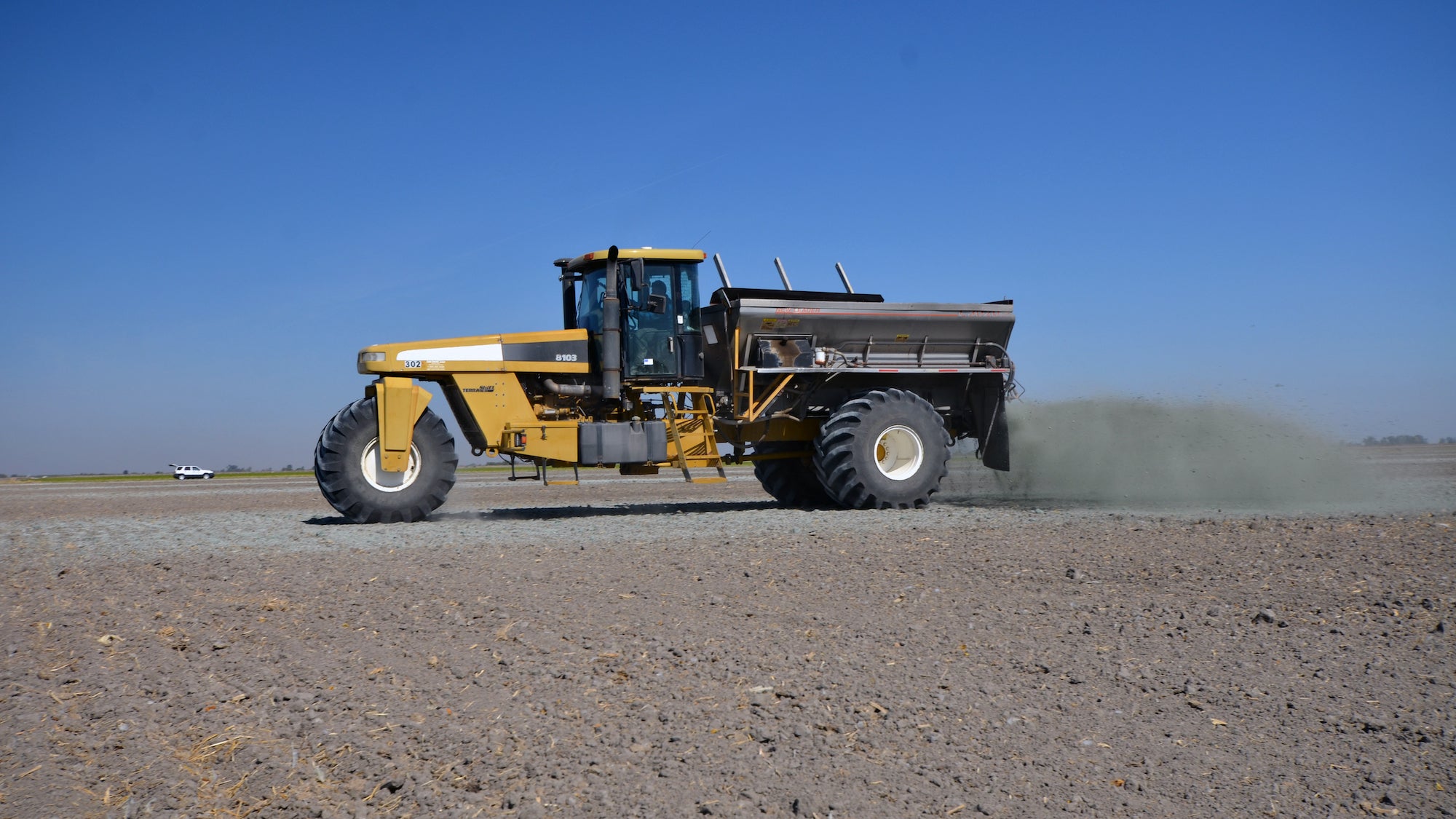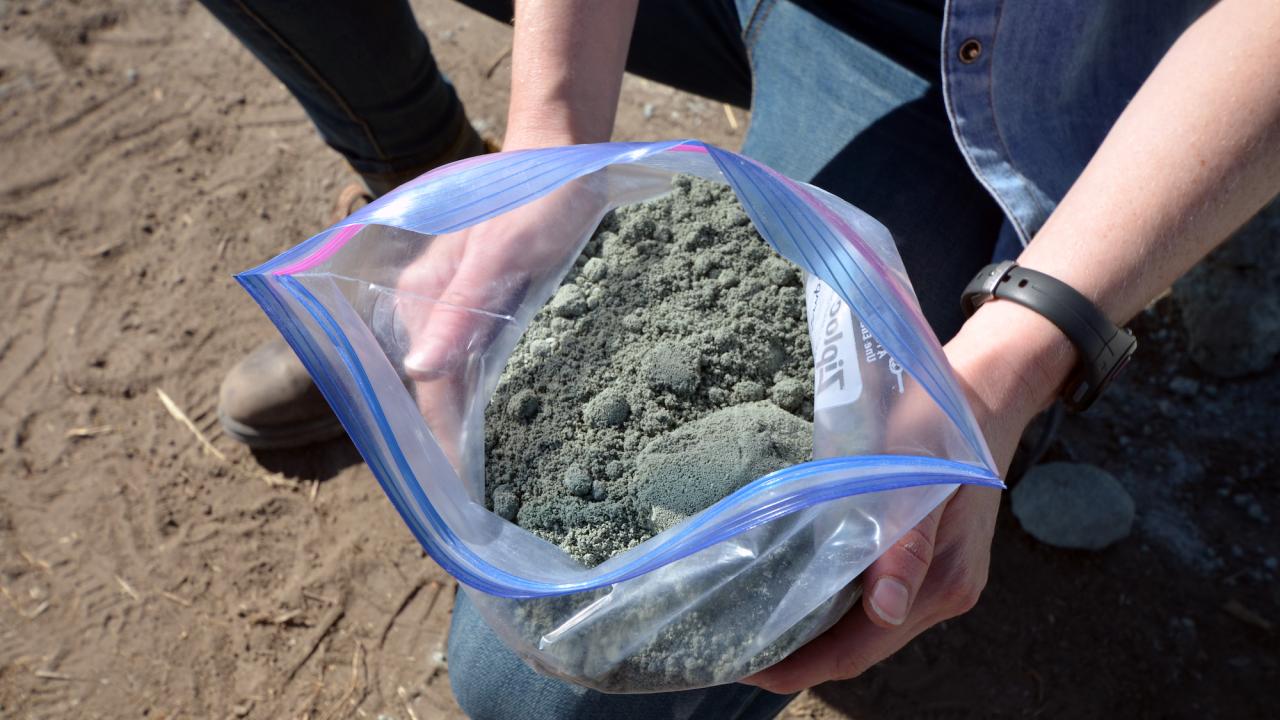Adding crushed volcanic rock to cropland could play a key role in removing carbon from the air. In a field study, scientists at the University of California, Davis, and Cornell University found the technology stored carbon in the soil even during an extreme drought in California. The study was published in the journal Environmental Research Communications.
Rain captures carbon dioxide from the air as it falls and reacts with volcanic rock to lock up carbon. The process, called rock weathering, can take millions of years — too slow to offset global warming. But by crushing the rock into a fine dust, rock weathering speeds up. Previous studies have estimated this “enhanced” rock weathering could store 215 billion tons of carbon dioxide over the next 75 years if spread across croplands globally.
But until now the technology hasn’t been field-tested in dry climates.
“These reactions require water,” said lead author Iris Holzer, a doctoral candidate in soils and biogeochemistry in the Department of Land, Air and Water Resources at UC Davis. “Since we’re interested in the global carbon storage potential of enhanced weathering, we need to understand if it can work in these drier climates and if different measurement approaches are effective. We were excited to observe carbon removal in this environment.”
California as a test case for storing carbon
Researchers applied crushed rock, both metabasalt and olivine, on 5 acres of a fallowed cornfield in the Sacramento Valley. They collected measurements during the winter months of 2020-2021. California was experiencing extreme drought at the time, with rainfall at 41% of its historical average.

The study found the plots with crushed rock stored 0.15 tons of carbon dioxide per hectare (2.47 acres) during the study compared to plots without crushed rock. Though researchers expect different weathering rates in different environments, if this amount of carbon was removed across all California cropland, it would be equivalent to taking 350,000 cars off the road every year.
“We’re definitely seeing evidence of weathering processes taking place on short time scales,” said Holzer. “Even the infrequent heavy rains we get in the West might be enough to drive enhanced rock weathering and remove carbon dioxide.”
Holzer said measuring and verifying that carbon storage at larger scales and following it over time is the next challenge.
Forty-one percent of Earth’s land surface is covered by drylands that are expanding due to climate change. Researchers said this makes investigating enhanced rock weathering in drylands increasingly important.
“When it comes to bending the global carbon curve, we are in a race against time,” said senior author Benjamin Z. Houlton, Ronald P. Lynch Dean of the Cornell University College of Agriculture and Life Sciences. “Our study demonstrates a new way to verify carbon dioxide removal via enhanced weathering, which is a critical leap forward for scaling this technology in croplands worldwide.”
Other authors include Mallika Nocco, in the Department of Land, Air and Water Resources at UC Davis.
The research, part of the Working Lands Innovation Center, was funded by the California Strategic Growth Council and the Grantham Foundation, Roger Sant and Doris Matsui. Aggregates and mining company, SGI, a Standard Industries company, donated the crushed metabasalt rock from its site in Ione, California.
Media Resources
Media Contacts:
- Iris Holzer, Department of Land, Air and Water Resources, UC Davis, ioholzer@ucdavis.edu
- Benjamin Z. Houlton, College of Agriculture and Life Sciences, Cornell University, bzhoulton@cornell.edu
- Amy Quinton, UC Davis News and Media Relations, cell 530-601-8077, amquinton@ucdavis.edu
